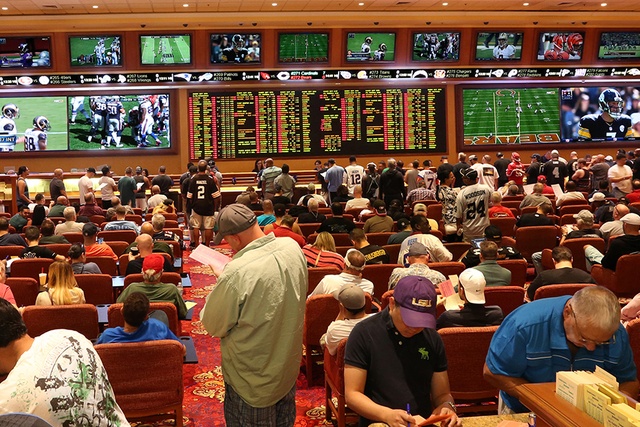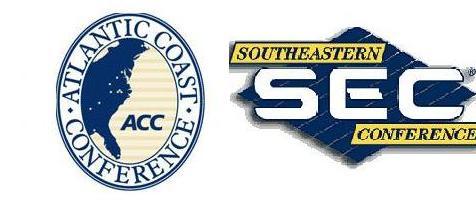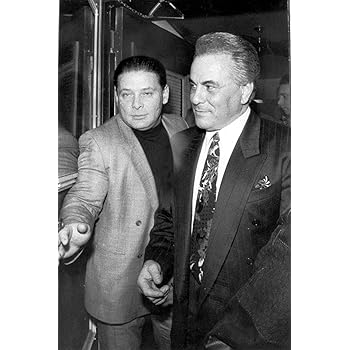GUNTERSVOL
VOL FROM BIRTH
- Joined
- Dec 30, 2017
- Messages
- 8,531
- Likes
- 11,863
I know this is going to solidify my status as a grumpy stubborn old guy but I need to put this out there for all to see why I am so wound up, not about the call, but how it was administered by replay. I think there is verifiable video evidence to support a different ruling and the following depicts why.
Multiple talking heads have parroted the position that the call being FORWARD PROGRESS is NOT reviewable. Well, that is a half truth, like LOTS of calls that are not reviewable the result of the call is reviewable, when he blew the whistle it was done. Funny that there is this section in the 21 NCAA Instant Replay Casebook for forward progress. Much more there to if you care to review it all.
21 NCAA Instant Replay Casebook
22 PART II: INSTANT REPLAY MECHANICS AND GUIDELINES
.Forward Progress
Forward progress is a term indicating the end of advancement by the ball carrier or airborne pass receiver and applies to the position of the ball when it becomes dead by rule (Rule 2-9-2).
The replay official must know the ruling on the field and where officials ruled progress.
Replay can create or negate a safety, touchdown or first down.
---
Let's also review the key rule involved with the runner out of the the 21 NCAA Rulebook also available online for free.
I believe Rule 4.3 and 4.2 are the most pointed to the call that CAN be reviewed. 4.3 defines the actual CALL of forward progress and 4.2 clarifies when the ball goes from live ball to dead ball status for all related calls.
RULE 4 / ball in play, dead ball, out of bounds
Ball Declared Dead
ARTICLE 3. A live ball becomes dead and an official shall sound their whistle or declare it dead:
a. When it goes out of bounds other than a kick that scores a field goal after touching the uprights or crossbar; when a ball carrier is out of bounds; or when a ball carrier is so held that their forward progress is stopped. When in question, the ball is dead .`
----
YEP, not arguing that the call was within the rules for him to make, nor that he made it. Don't think it was accurate, but it was executed. But let's go back up to 4.2 to define how the book says plays with verifiable actions ending a play like down by contact or stepping out of bounds creates a dead ball and how a judgment call differs. NOTICE the "OR" in this rule.
Live Ball Becomes Dead
ARTICLE 2. a. A live ball becomes a dead ball as provided in the rules or when an official sounds their whistle (even though inadvertently) or otherwise signals the ball dead.
---
The otherwise signals is a subplot, but in the same book go to appendix F and holding up one arm is not defined as a signal to stop the play or clock like the one we see all the time, with two arms up and waving back and forth especially on a change of possession play like this one. In our other infamous play vs UM if you remember the linesman raised his hand 20 yards behind the play and ran all the way to the ball and he did not kill the play. We see plays all the time where both linemen run in with their arms up. But the whistle when applied seems to be the key action to end the play. Replay has a spot to verify on down by contact, or a line crossed for out of bounds to end the play, only an official's declaration for judgement calls.
We have also been told over and over that the whistle did not matter. I need to see that supported in the book to buy that. This rule seems to make the whistle the most important element for DECLARING a play dead. For example this call is often made with a runner being pushed backwards and the whistle is blown but the ball is spotted at the most forward spot until the whistle was blown.
So the key question is if this play was correctly handled by Replay what should they have ruled? Let me close with some more excerpts from the Replay Casebook that should have driven the end game situation. That is what can be replayed. Same should be true here. In fact it also states that during the review-
o Replay can only move the ball closer to the line to gain, not farther away.
PART II: INSTANT REPLAY MECHANICS AND GUIDELINES
Competitive Effect
• The replay official should not overthink competitive effect. The game should be stopped in obvious review situations.
• Scoring and change of possession plays must be cleared by replay before play is resumed.
• Reviewing whether a player made the line to gain is significant on third and fourth down. The guideline can be less at the end of each half and in red zone situations
• Everything is magnified in overtime. A review that may result in a five-yard difference is enough to warrant a stoppage
---
I know that the game is over, but I want an honest and accurate account of how this situation was handled and if that was to the letter of the book. I don't think the ball was dead till the whistle, and the one I heard was after ball crossed the plane. But for sure I want them to end the charade that forward progress spot is not reviewable. He should have run in and spotted the ball where it was when he legally ended the play with his whistle. A ball is live till it is not.
As always if you have more rules or input relative to this situation, I would appreciate you sharing it.
I hate losing to a fault, but hate it more when I think replay did not apply the rules just to cover for a marginal at best call on the field. As I posted in another thread I think the announcement after a review would have been "after review the player was not down by contact and he extended the ball and broke the plane before the whistle and therefore it is a touchdown."
They can clear it all up by showing why the ball was dead BY RULE before the whistle we heard blew or provide the video evidence they used of an earlier whistle.
Anyway, this is my story and I am sticking to it. He did in fact rule PROGRESS and he did in fact blow it dead, but his whistle was late enough we still scored while the ball was still live, regardless of his intent.
EDITED TO ADD RULES SUBSEQUENTLY POSTED IN RESPONSE TO DIALOG IN THIS THREAD ONLY
RULE 12 / INSTANT REPLAY
ARTICLE 3. Reviewable plays involving potential dead balls and loose balls include:
e. Ball carrier’s forward progress, spot of fumble, or spot of out-of-bounds backward pass, with respect to a first down or the goal line.
ANOTHER ADDED 1/10
PART III: PLAY SITUATIONS/RUNNING PLAYS
Running Plays
18. Runner down with respect to a first down
Third and 10 on the A-20. A22 is downed, with his knee landing at the A-29. Officials spot the ball at the A-29, although A22 had extended the ball to the Team A 31-yard line prior to his knee hitting the ground. RULING: Reviewable play, regarding whether A22 had made the line to gain. Reverse to A 1-10 on A-31, reset clock if within two minutes of the first half or five minutes of the second half and start on the Referee’s signal (Rule 12-3-3-e). 19. Forward progress with respect to a first down Third and 10 on the B-20. A22 runs to the B-9, where he is pushed back to the Team B 15-yard line and is never downed. Officials rule forward progress was stopped at the Team B 11-yard line. RULING: Reviewable play, regarding whether A22 had made the line to gain. Reverse to A 1-Goal on B-9, reset clock if within two minutes of the first half or five minutes of the second half and start on Referee’s signal (Rule 12-3-3-e).
If in doubt concerning the line to gain language.....
Line to Gain ARTICLE 2. a. The line to gain for a series shall be established 10 yards in advance of the most forward point of the ball; but if this line is in the opponent’s end zone, the goal line becomes the line to gain.
Multiple talking heads have parroted the position that the call being FORWARD PROGRESS is NOT reviewable. Well, that is a half truth, like LOTS of calls that are not reviewable the result of the call is reviewable, when he blew the whistle it was done. Funny that there is this section in the 21 NCAA Instant Replay Casebook for forward progress. Much more there to if you care to review it all.
21 NCAA Instant Replay Casebook
22 PART II: INSTANT REPLAY MECHANICS AND GUIDELINES
.Forward Progress
Forward progress is a term indicating the end of advancement by the ball carrier or airborne pass receiver and applies to the position of the ball when it becomes dead by rule (Rule 2-9-2).
The replay official must know the ruling on the field and where officials ruled progress.
Replay can create or negate a safety, touchdown or first down.
---
Let's also review the key rule involved with the runner out of the the 21 NCAA Rulebook also available online for free.
I believe Rule 4.3 and 4.2 are the most pointed to the call that CAN be reviewed. 4.3 defines the actual CALL of forward progress and 4.2 clarifies when the ball goes from live ball to dead ball status for all related calls.
RULE 4 / ball in play, dead ball, out of bounds
Ball Declared Dead
ARTICLE 3. A live ball becomes dead and an official shall sound their whistle or declare it dead:
a. When it goes out of bounds other than a kick that scores a field goal after touching the uprights or crossbar; when a ball carrier is out of bounds; or when a ball carrier is so held that their forward progress is stopped. When in question, the ball is dead .`
----
YEP, not arguing that the call was within the rules for him to make, nor that he made it. Don't think it was accurate, but it was executed. But let's go back up to 4.2 to define how the book says plays with verifiable actions ending a play like down by contact or stepping out of bounds creates a dead ball and how a judgment call differs. NOTICE the "OR" in this rule.
Live Ball Becomes Dead
ARTICLE 2. a. A live ball becomes a dead ball as provided in the rules or when an official sounds their whistle (even though inadvertently) or otherwise signals the ball dead.
---
The otherwise signals is a subplot, but in the same book go to appendix F and holding up one arm is not defined as a signal to stop the play or clock like the one we see all the time, with two arms up and waving back and forth especially on a change of possession play like this one. In our other infamous play vs UM if you remember the linesman raised his hand 20 yards behind the play and ran all the way to the ball and he did not kill the play. We see plays all the time where both linemen run in with their arms up. But the whistle when applied seems to be the key action to end the play. Replay has a spot to verify on down by contact, or a line crossed for out of bounds to end the play, only an official's declaration for judgement calls.
We have also been told over and over that the whistle did not matter. I need to see that supported in the book to buy that. This rule seems to make the whistle the most important element for DECLARING a play dead. For example this call is often made with a runner being pushed backwards and the whistle is blown but the ball is spotted at the most forward spot until the whistle was blown.
So the key question is if this play was correctly handled by Replay what should they have ruled? Let me close with some more excerpts from the Replay Casebook that should have driven the end game situation. That is what can be replayed. Same should be true here. In fact it also states that during the review-
o Replay can only move the ball closer to the line to gain, not farther away.
PART II: INSTANT REPLAY MECHANICS AND GUIDELINES
Competitive Effect
• The replay official should not overthink competitive effect. The game should be stopped in obvious review situations.
• Scoring and change of possession plays must be cleared by replay before play is resumed.
• Reviewing whether a player made the line to gain is significant on third and fourth down. The guideline can be less at the end of each half and in red zone situations
• Everything is magnified in overtime. A review that may result in a five-yard difference is enough to warrant a stoppage
---
I know that the game is over, but I want an honest and accurate account of how this situation was handled and if that was to the letter of the book. I don't think the ball was dead till the whistle, and the one I heard was after ball crossed the plane. But for sure I want them to end the charade that forward progress spot is not reviewable. He should have run in and spotted the ball where it was when he legally ended the play with his whistle. A ball is live till it is not.
As always if you have more rules or input relative to this situation, I would appreciate you sharing it.
I hate losing to a fault, but hate it more when I think replay did not apply the rules just to cover for a marginal at best call on the field. As I posted in another thread I think the announcement after a review would have been "after review the player was not down by contact and he extended the ball and broke the plane before the whistle and therefore it is a touchdown."
They can clear it all up by showing why the ball was dead BY RULE before the whistle we heard blew or provide the video evidence they used of an earlier whistle.
Anyway, this is my story and I am sticking to it. He did in fact rule PROGRESS and he did in fact blow it dead, but his whistle was late enough we still scored while the ball was still live, regardless of his intent.
EDITED TO ADD RULES SUBSEQUENTLY POSTED IN RESPONSE TO DIALOG IN THIS THREAD ONLY
RULE 12 / INSTANT REPLAY
ARTICLE 3. Reviewable plays involving potential dead balls and loose balls include:
e. Ball carrier’s forward progress, spot of fumble, or spot of out-of-bounds backward pass, with respect to a first down or the goal line.
ANOTHER ADDED 1/10
PART III: PLAY SITUATIONS/RUNNING PLAYS
Running Plays
18. Runner down with respect to a first down
Third and 10 on the A-20. A22 is downed, with his knee landing at the A-29. Officials spot the ball at the A-29, although A22 had extended the ball to the Team A 31-yard line prior to his knee hitting the ground. RULING: Reviewable play, regarding whether A22 had made the line to gain. Reverse to A 1-10 on A-31, reset clock if within two minutes of the first half or five minutes of the second half and start on the Referee’s signal (Rule 12-3-3-e). 19. Forward progress with respect to a first down Third and 10 on the B-20. A22 runs to the B-9, where he is pushed back to the Team B 15-yard line and is never downed. Officials rule forward progress was stopped at the Team B 11-yard line. RULING: Reviewable play, regarding whether A22 had made the line to gain. Reverse to A 1-Goal on B-9, reset clock if within two minutes of the first half or five minutes of the second half and start on Referee’s signal (Rule 12-3-3-e).
If in doubt concerning the line to gain language.....
Line to Gain ARTICLE 2. a. The line to gain for a series shall be established 10 yards in advance of the most forward point of the ball; but if this line is in the opponent’s end zone, the goal line becomes the line to gain.
Last edited:






